Tennis is both an amazing sport to watch and to play. We see the greats like Serena and Federer inspiring us to pick up a racket and start whacking tennis balls over the net. But as anyone knows, picking up a new sport or hobby might not come naturally to everyone.
It can be frustrating for anyone if you go into tennis with no information. Without knowing how to grip the racket, what racket to play with, or where to start, it’s impossible to have any fun. The real fun starts when you understand the basic concepts.
That’s why these top 21 tennis tips for beginners will start you off on the right foot.
Table of Contents
1. Invest in a first-time private lesson at a local club.
This may not be the typical advice that anyone would really think of when picking up a sport. But by calling your local club and explaining to them this is your first lesson or your child’s first lesson, you will get a lot of the “firsts” taken care of by someone else.
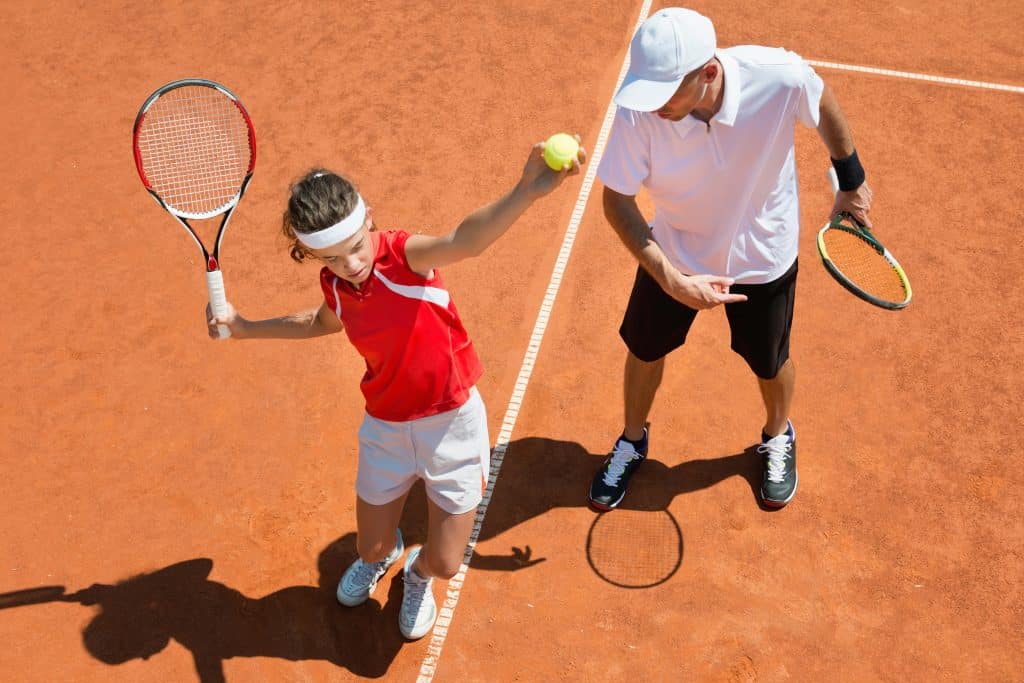
For instance, you may not have a tennis racket, and you won’t really know whether to invest in one or not because you don’t know what your game style is, and they can be expensive. By calling your local club, the pro who is giving you your first ever lesson will be able to lend you a demo racket that fits accordingly or let you try out a few.
It doesn’t really matter what you first play with because you are likely to not know the difference between rackets and feels. If it is a child’s first lesson size of the racket is important because it depends on the kid’s age and height. The instructor will again know what racket is appropriate for your child.
Another thing that teacher will be able to help you with is to introduce basic form that you can understand in just one lesson. This doesn’t mean that you will be able to start moving and grooving, but you can understand certain concepts and repeat them by yourself.
2. Know Your Level Of Commitment For Racket Purposes
The first thing any beginner in tennis should do before choosing a racket is to have some sort of idea of how much they want to play. If you are someone who wants to play a lot, then investing in a good quality racket is important. If you are a beginner who will only find yourself playing a few times a year, then something more affordable is a better option.
Once you decide, you can start doing some research on the type of racket you can play with. If you are buying a racket for a child, remember that their height and weight will determine what racket they will play with. You can follow this guide here if you don’t know where to start with children’s rackets.
Regarding adult rackets, if you choose to go the route of more affordable rackets, you can find many of them at most sporting goods retailers. Keep in mind that these rackets will normally be built with lighter materials and will hit differently than a more expensive racket that we see on tour.
For rackets that are a few hundred dollars, it’s worth doing some research on the specs of the racket and find a middle of the road racket until you understand your game as it develops. The rackets for beginners typically are mid-size range with head light or equally distributed weight throughout the racket. They should have big sweet spots for mishits.
3. Reinforce Good Grips
One of the easiest bad habits for a beginner to pick up is quite literally picking up the racket in weird ways. This is normal for anyone who isn’t really familiar with proper grips. To be completely honest, oftentimes, even those who play tennis quite often will find their grips sliding into different positions that may be suboptimal down the road or inhibit learning at a faster pace.
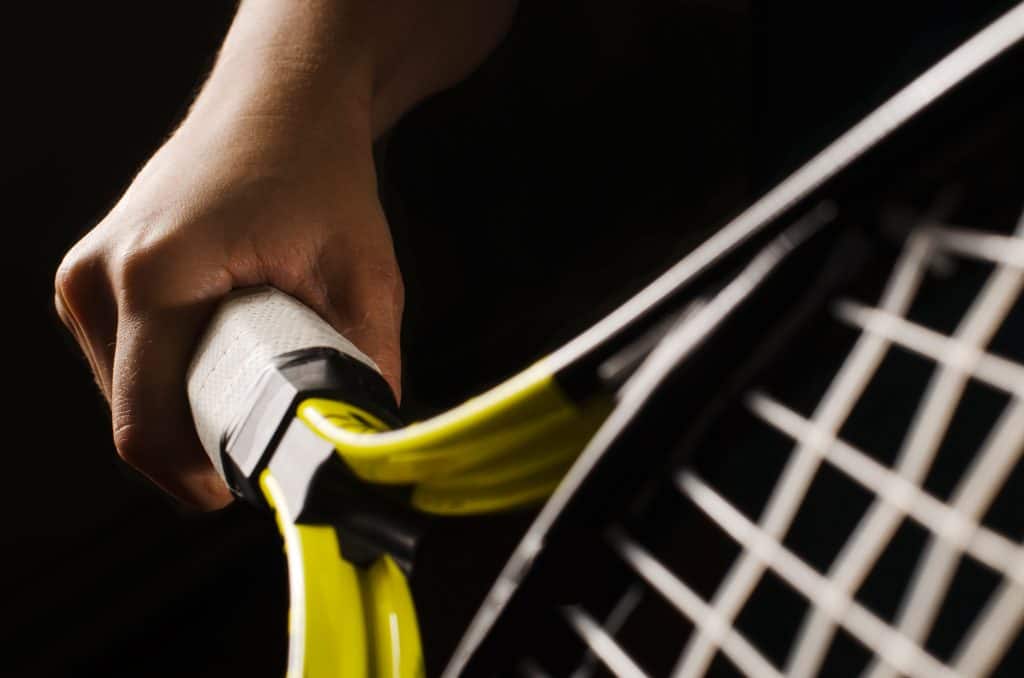
Taking the initial private lesson is a great idea because learning the grip for the first time is really important, and a true professional can help you with this. They may offer you tips and tricks for remembering the correct hand positions for each grip.
If you forget, here are some reminders and tricks for picking up the racket the right way.
Forehand: There are a few different grips out there for a forehand. Eastern, Western, and Semi-Western. For a beginner, it is optimal for the player to find a semi-western grip by placing the racket down on the floor and use their palm to touch the plane that is flat. Now they can wrap their fingers around the racket and pick it up. This is the easiest way to remember.
Volley and Serve: To find the continental grip for the volley, serve, and backhand slice, a beginner should shake hands with the racket. To shake hands with the racket, hold the throat of the racket with your left hand, so the strings are facing the left and right racket, then up and down. You will be looking at the racket on the side. Now you can shake hands with the racket, so the web between the pointer finger and thumb meets the right edge of the flat plane.
Backhand: For the backhand, you will keep the right hand in the continental grip and move the left hand just no top of the right hand in the forehand position. You can move the grip a little more inward if you want to make it an Eastern. This grip can be played a little with for comfort and strength.
4. Watch Youtube Tutorials
This is a great way to understand tennis for all levels. This can be especially important for those who are visual learners. It can be difficult to understand what we are doing because we can’t see ourselves. It completely relies on the feel of what we are doing, and as a beginner, that is not something that they will have a lot of.
There are several types of tutorials and videos that will be useful. The first one that comes to mind is showing you how to get the grips right, followed by learning the swings themselves. Watching a video and shadowing the swings without the hecticness of the ball is a great way to isolate certain features of the game to learn things more comfortably and at a faster pace.
Another great tutorial for beginners who may have played a few times will do things like explaining the scoring. Understanding the scoring is important for those who want to advance and play. The best part of tennis for most is playing points and figuring out how to do the puzzle work of moving, hitting, and aiming.
Once you begin to play points and advance, many tutorials will break down tennis tactics and offer advice on different types of plays a player can make. For instance, may you enjoy volleys, and this tutorial shows you what corner of the court you should place the ball when coming into the net based on your volley strengths.
5. Take Privates In Combination With Classes
Having a private lesson is a really good chance to advance technique and specific weaknesses that a player may have and cannot work on in a group setting. A private lesson will give the player a controlled environment where the focus is solely on them and not another player’s ability.
For instance, if you need to work on the backhand, it could be hard to do so based on the other players’ level. If they also struggle with their backhand, the rally may not be cooperative enough to consistently work on your weakness.
Group lessons have their value as well and should be used in combination with a few privates. The group classes are great for beginners because tennis is a social sport and can ultimately become boring if all you do is private lessons. Group lessons allow players to develop relationships and set up separate hits outside of the class.
What you do in your privates can be reinforced by yourself in your group classes. And as you continue to develop, those group classes can turn into team play. It’s also a great way to continually keep playing and improving in different environments.
6. Do A Proper Warm-Up
We see the pros do it all the time, and so should we! It is easy as a beginner to get excited and just forget that we need to warm up properly before playing. Tennis requires a lot of rotation, use of legs, back, and arms. It’s a multi-dimensional sport, and when you don’t warm up properly, it can easily cause injuries.

A proper warmup should include some of the following.
- You should start with a jog or something to get you sweating and warm so you can properly loosen up some of the muscles. Cold muscles can’t react quickly and function properly.
- Once you start sweating, do some leg muscle warm-up and stretching. This could include lunges, hamstring stretches, quad stretches, ankle mobility, and more.
- Now you can work on the upper body by doing arm rotations, arm stretches, and more. Some people like to use resistance bands to activate the muscles.
A good warm-up should take you about 10 minutes, but people who tend to get more serious about taking care of their body can spend a full half-hour warming up, ensuring every muscle is ready to go. This will be the best insurance against injuries and soreness later once you start playing.
7. Learn The Footwork
There is nothing harder to learn than the proper footwork of tennis. Learning how to move while having a fluid swing doesn’t come naturally to a lot of people. First, you can start back with the Youtube tutorials on how to properly split step and move to the ball. There is, however, no substitute for doing it yourself.

There are a number of footwork drills you can do by yourself or with a private coach. The ones you can do by yourself are things like shadowing the motion without having any ball to worry about. This would just be applying what you learn from tutorials and coaches to practice motions.
There are a number of footwork drills you can do without the racket and ball-like cone work.
Using cones is a great way to improve efficient steps in a quick matter. Tennis has a lot of quick footwork that has various lengths of steps spending on quick reactions or long sprints.
You can also use the lines of the court to work on foot speed. A common drill is to do the scissors with your feet over the line. Start with your right foot over the line and your left foot with your toes behind the line. Switch quickly back and forth over the line to work on speed.
To work on the split-step speed, you can assume the split stance position behind the line, jump over the line to land in a split stance then jump back behind the line. Keep this motion back and forth quickly to work on reacting from the split step.
The best tennis footwork drills can be found here on Youtube.
8. Mix Up Your Partners
Not just beginners, but all players tend to get comfortable playing in certain groups or with certain hitting partners and friends. This is detrimental to beginner’s games because they are then not exposed to enough variables
Where most beginners start to impair their improvements is when they opt for comfort all the time. We often get reminded to “feel” the ball and get some “rhythm.” This to some coaches are valuables, but often tennis is anything but the two. We often play messy and have to adapt constantly.
There is a time for feeling the ball and rhythm when you are working on consistency and other things. But it can be incredibly beneficial to constantly mix up the playing styles you hit with. Some days you should play with someone who hits hard and flat. Other days you should play with someone who will slice the ball and then hit a heavy topspin to drag you forward and push you back.
Something you can do in your individual private lessons has the coach mix it up and make you uncomfortable. This can be frustrating, but the long-term gains and improvement will be well-rewarded if it is done with the right mindset.
9. Shoes Matter
Tennis shoes are costly. Oddly they can be close to what you pay for a racket in some cases. Depending on how much you play, they, unfortunately, won’t last very long either. This makes beginners not want to get the most expensive pair on the market.
The most expensive pair doesn’t mean they are the best pair, but sometimes the shoes on sale aren’t selling for a reason either. Getting a pair of shoes needs to really be based on comfort rather than style. Many foot health issues can develop from wearing the wrong pair of shoes, so it’s important to try them out.
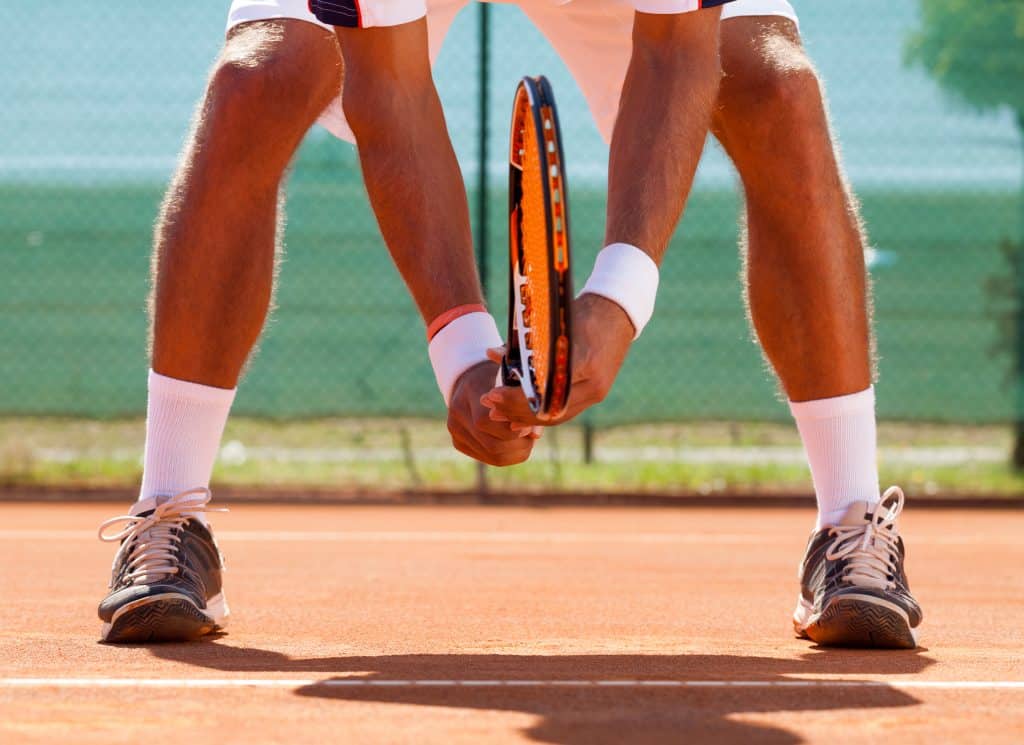
So how do you pick the right shoe? Certain shoes will have higher sides to support those who need more ankle support. If you are someone who is prone to turning your ankle over, these types of shoes would be for you. Some shoes also have a higher arch on the inside for arch support, whereas some are flatter on the inside.
The weights of the shoe also vary. Those who need a lighter shoe because they struggle to run faster or feel comfortable lifting shoe. Some feel a heavier shoe is a more stable offering and would prefer that instead.
The best thing you can do is do the research and then experiment with what feels best.
10. Watch the Burnout
This is more for the parents who are introducing kids who are under the age of 18 to the sport. However, this is also something you should consider for yourself if you are an adult who is picking up the sport. Tennis is a mental game along with its physical component. It is equally as tiring to your head as it is to your body when you play.
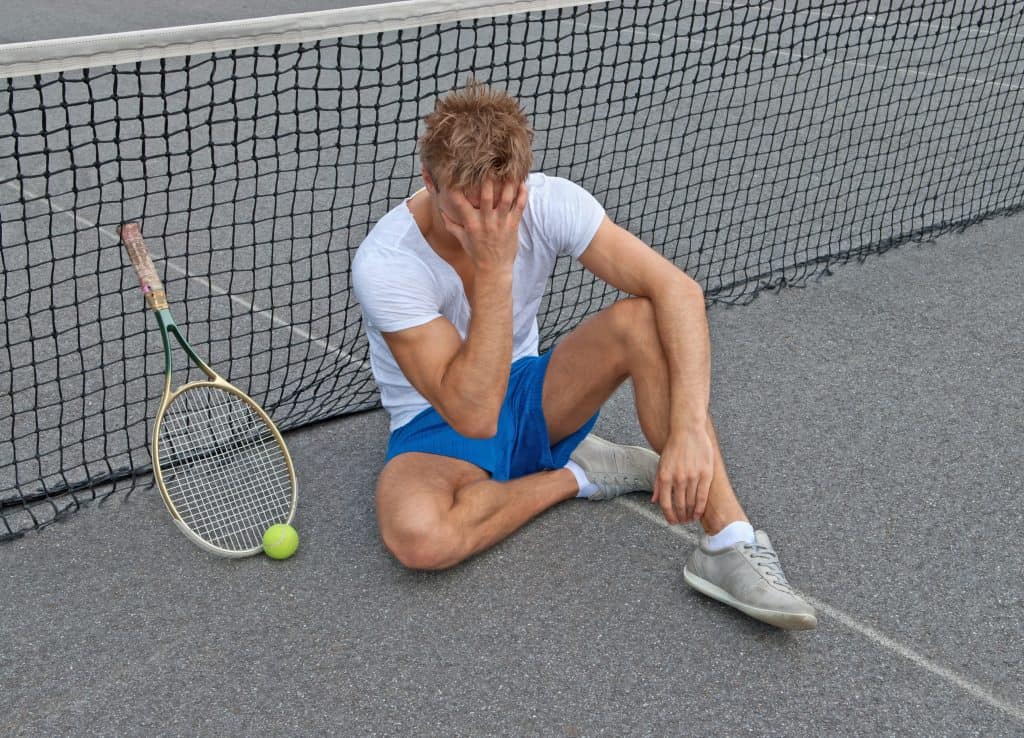
Tennis is an over-practiced sport, in general, where the athletes will spend multiple hours and hours on court with repetition of the same things over and over again. This can lead to quick burnout as a player because of the desire to want to get to the point of literally playing points.
This can lead to mental fatigue and frustration that can do more harm than good. This can also lead to physical injuries from repetitive motions. These often lead to young kids wanting to stop way too soon.
The best thing you can do for yourself or for your child is to introduce fun aspects of the game. Even if you are not ready for points, it can be fun to run around and just hit the ball with little to no expectations. If even this is not that fun for the player, then it is best to take a little break and step away or cut back the hours you are devoting to the court.
When talking strictly about kids, it’s best to get them in social environments like classes because this emphasizes fun and the love of learning rather than competition and improving to a degree.
11. Don’t Skip The Fitness
Tennis is a game of endurance. Sometimes our bodies become accustomed to the movements and motions. It’s a great addition to add fitness to anyone’s routine to improve fitness levels.

As mentioned before, if we train in tennis for fitness as well as the other things, it can be easy to burnout. That’s why when you cross-train and do your fitness outside the court, you can add some variety to your game.
Some of the ways you can do this are basic training methods like running and biking. Most players love to combine running with tennis, and this isn’t necessarily a bad thing. Running long-distance, however, can slow down your fast-twitch muscles needed for tennis. That’s why when we bike or run in the form of improving endurance. It is better to do sprint intervals for an extended period of time. This will most resemble point-like durations and adequately train you off the court.
For those who like something a little more exciting, anything like hiking, yoga, dance workouts, and many other varieties of fitness will work just fine. This will give you major gains on the court that you may not get from just playing extra hours of tennis.
12. Don’t Be Afraid To Switch Out Your Coach
It is a stigma that you should really work with one coach when you are playing tennis. And this does, in fact, make sense for the reason being that you don’t want two coaches to tell you two separate things that will end up confusing your game. You do want to ultimately work with one coach you trust and feel you are making progress with.
However, it is not a bad idea to switch up your coach when you feel like things maybe aren’t working out. Sometimes we just don’t click with who we are working with. Their coaching style may be too easy or too hard and not allow a player to grow in the environment they are meant to.
Where you can have more than one coach is when you go to a club, and the coaches all work together. You may use one coach for technique and another as a hitting partner to mix up the variety and hear a different perspective.
As long as this is done with good communication and everyone is on the same page, this can work quite well. Where this starts to go wrong, as mentioned, is when two coaches are not communicating, and they are relaying two different messages to a beginner or really anyone at any level that would confuse the player on how to perform and hit.
Another alternative to switching out your coach is hiring someone who doesn’t cost as much to hit with you as a hitting partner. This is different from just practicing with a friend because you will likely still pay this person to cater to your needs. The difference is they won’t be coaching you. They are just there to help you work on what you need to. This may be an experienced high school or college player.
13. Play Some Tournaments
As mentioned, the best part of playing tennis is actually getting to compete. Well, this isn’t the case for everyone, but most people feel this way. There are tournaments out there for every level, so once you feel like you can keep track or score and play a point, go ahead and enter some tournaments.
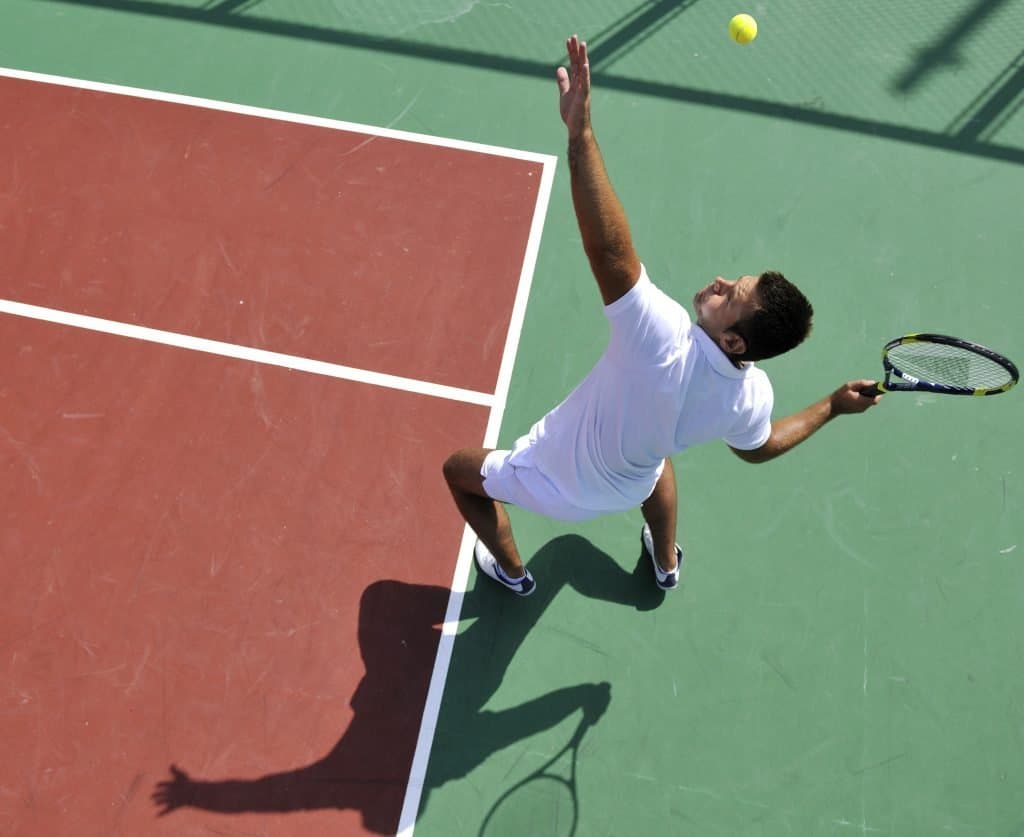
For those who are in the U.S.A, you can enter UTR tournaments or tournaments hosted by the U.S.T.A. or the United States Tennis Association. They have tournaments for kids and adults, and sometimes you will find a combination of both depending on the different levels.
Playing tournaments is always the best teacher of how you are processing information and applying it after weeks of lessons and group classes. When you play a tournament, consider taking notes after your match for what works and what doesn’t work. This will help you refine your game and improve it consistently.
If you are a beginner but go to an academy (if you are a kid), it’s worth having a coach come look at you to see what’s going on. If you can’t get someone to watch you and see what you are doing once the competition starts, it’s worth investing in a video camera to record some of your stuff to show them later.
If you are someone who doesn’t necessarily like tournaments oftentimes clubs can organize for fun match play for their members where the competition is less serious, and there is often food and drinks offered after to make it more of a social event rather than a competitive event.
14. Play On Teams
Tennis is an individual sport for the most part that really tends to isolate players from each other. Where this can be corrected is when you play on team events. There are a number of events offered by the U.S.T.A for adults and kids that would encourage a team environment and a little more fun.

Often times for adults, a club will structure its schedule and week around different adult teams. For instance, they may have matches on Wednesdays. Therefore, the club will schedule team practices Monday and Friday for that particular group.
Many clubs have several teams of all levels, and a pro at the club can play a beginner on the right team based on their evaluation. This offers the same great benefit of having a coach see you play and see what kinds of strengths and weaknesses set in during competition mode rather than a more relaxed practice environment.
Often teams also add a social part to the sport that can be great. They often encourage teams to bring lunch/snacks to the matches to socialize with the other teams after the match. This can be a great way of making new hitting partners and friends along the way.
15. Update Your Racket and Gear As You Improve
If you see any of our guides to choosing a racket, you will know that updating your racket as you improve is incredibly important. The more we use a racket, the more juice it loses, and eventually, it will need to be replaced after a few years, depending on the wear and tear it is taking on.
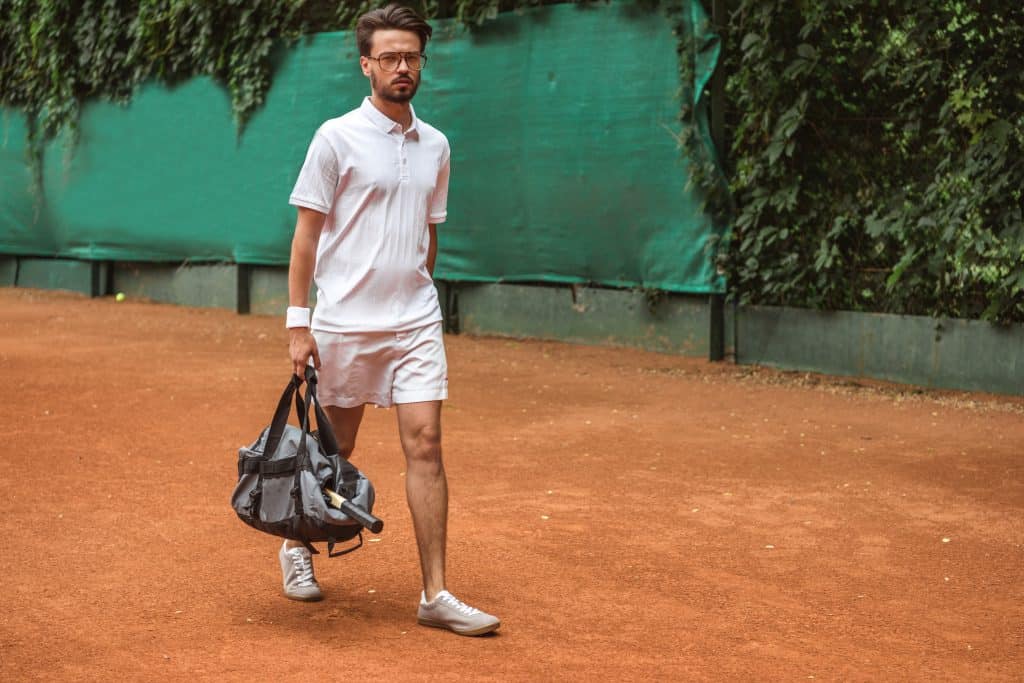
Rackets can also offer various styles and specs that would make the racket hit with more or less power, feel heavier or lighter, cause vibration or not, etc. These are all decisions that will constantly adjust when you adjust your game.
When choosing new rackets, it’s a great idea to talk with the coach you are working with. Sometimes you may choose a racket that is not a great fit because it is holding you back or it is too ambitious for where you are at. Often a coach will try to push a player a little bit to choose a racket that will suit the game they are working towards rather than the game they currently have.
This is especially true for those who move out from beginner rackets to intermediate players. Sometimes a beginner may be more suited for an intermediate racket because of their natural athleticism and strength.
Rackets aren’t the only thing that should be updated. Updating your strings or trying new strings outs can be an important part of someone’s game. Depending on how hard you hit and with what spin, you may need a thicker or less thick string. This will help with how often your break which will change as you develop as a player.
16. Don’t Fret About The Flying Balls
The goal of hitting tennis balls is to put them into the court. However, as a beginner, this actually should be less of the focus. If you are a beginner that has a lot of power and is missing by a few feet, this is OK and should be encouraging rather than discouraging. This is because it is easier to teach a player spin and shot selection than it is to increase their power without changing their racket or swing.
Natural power is a gift, and it means that you, as a beginner, are swinging freely enough to try new things as a player. Naturally, athletes begin to develop feel as they go. It’s all in the small wrist movements upon contact that will determine whether the ball goes in or not.
One of the biggest struggles of junior players in the game is that often their balls are not deep enough. They hit short and automatically are put on the defense at the start of every point. This can lead to a tiring long match if it is almost always played in defense rather than offense.
As a beginner, in general,l should not be spending too much time worrying about where the ball is going but rather be thinking more about the technique, motion, and footwork, that goes into a shot. These are all very complicated movements and require a lot of isolation as it is. The placement of the ball will come naturally when these things start to come together.
17. Spend Time On The Serve
Arguably the service is the most important part of the game. This is the start of every point, and if you have a good serve (hello Serena), you will have a major advantage over your opponents. The service, however, is one of the more complicated shots as it starts below your head, makes its way over your head, and then finishes below your waist.

There are a number of different serves that anyone can use when it comes to placement and spin. There is slice, kick, and flat. There is also wide, body, and T serves. Usually, a player will become strong in one or two of these serves, and as they improve, try to add other serves to their game.
Placement and the type of spin go together. For instance, if you are on the deuce side and a right-handed player working on your out-wide serve, you will need to use a bit of slive to get the ball to go to that corner of the box. To serve up the T of the court, you will either use a flat or a kick-serve.
As a beginner, you should understand that the ball toss will move slightly depending on the type of serve you are going to be using. For kick serves, the ball will move a little bit over the head so you can get the under part of the ball with contact. For flat serves, the toss may be a little bit more in front of you.
As you advance as a player, it’s recommended to spend one to two times a week for 30 minutes serving. You may be able to get in one of two types of serves during this practice, and you can alternate what kinds of serve you need to work on.
Second serves specifically are important because of the need to perform under pressure. These aren’t practiced nearly enough at the beginning level because often, a player doesn’t know how to distinguish between the first and second serve. Taking pace off and adding spin to the second serve is vital.
18. Do Your Returns
Now arguably, the second most important shot is your return of service. This is something that not all players really spend time on from the beginning. This is the second shot in the rally and one of the harder shots to get back depending on who you are playing.
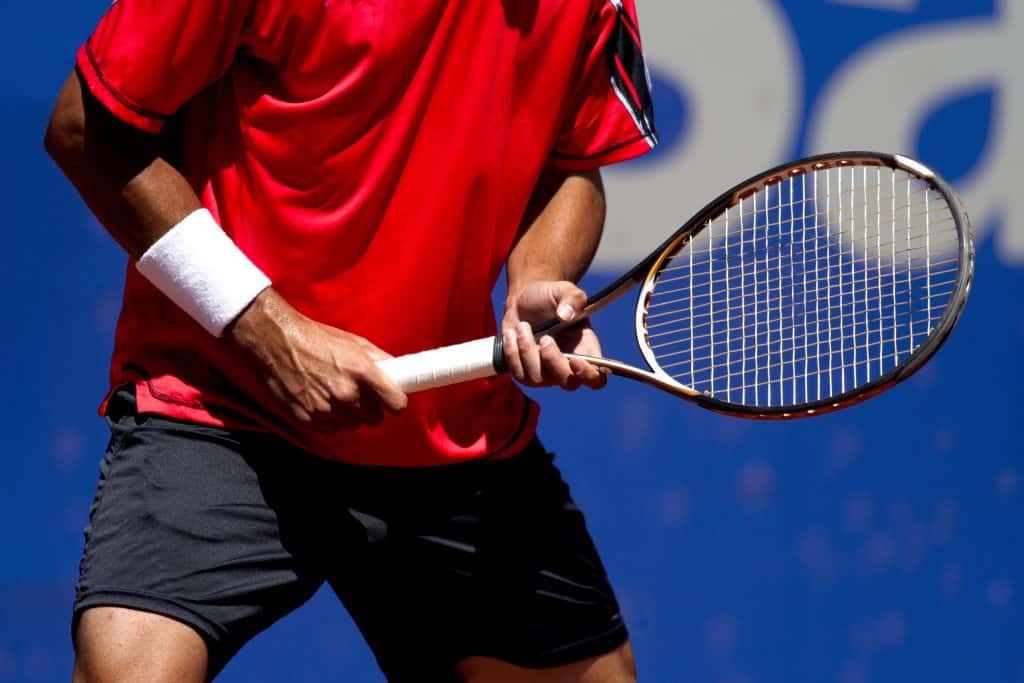
The serve is the fastest hit ball, and at that moment, you have to decide as a player whether you are going to return aggressively or neutrally. It’s never ideal to return defensively because then you start the point on the defense. You can, however, return with a heavy high ball, and it is somewhat considered to be defensive.
Neutral returns are just blocking the ball back for those who have great serves. These are often deep and up the middle off of first serves. Aggressive returns may be more common on the second serves and lead you to go to smaller portions of the court trying to either win the shot on the next point or hit an outright winner.
Returning requires a level of footwork that is both simple and complicated at the same time. It requires a split step that is well-timed along with an efficient path to the ball because of the limited amount of time you have to get into position to make an effective return.
A player should practice the footwork in isolation and then spend a good amount of time practicing returns with a coach or partner.
19. Know Your Strengths and Develop Your Weakness
This goes back to that ability to stay in your comfort zone. Beginners nowadays should be encouraged to explore all areas of the court. Naturally, a player is going to have a few strengths. Commonly, we see players developing into aggressive baseliners.
This is great for a certain style of play but can really let you down later in life if this is the only thing you develop. When just starting out, you may notice right away you don’t move well going forward to the net. This is more of a reason to get to the net as quickly as you can and be comfortable doing the uncomfortable.
An all-court player will be able to have a plan A, B, and C. This is important when it comes to tennis tactics as many players have different styles of games. You may face someone eventually that hits super hard but can’t really very long. Or just the opposite, you may face someone who can go forever but hits very slow. Neither game is wrong, but you need a plan to combat both.
This is why experimenting with different playing styles and shots and working on the weakness of someone’s game early on can be a great benefactor as they improve later.
20. Know Your Injuries
There are a number of tennis-prone injuries that come up in the sport all the time. You can read our “Most Common Tennis Injuries” to go in-depth, but here are a few things to look out for and consider when you are picking up the sport.
The reason why it is important to choose the right racket is that you don’t want to develop tennis elbow. Tennis elbow is pain that comes from the arm due to muscle tightness and joint irritation that builds up over repetitive motion. This can come from bad technique or the wrong racket.
Choosing the right shoes can be important for knee-related injuries. If you are someone who wears orthotics, you should be especially careful with the shoes you invest in. It should play a lot of roles in foot health and how well you change direction. They also can preserve your ankles, as mentioned before, so this is an investment worth spending the money and time in.
Shoulder injuries can come from the serve and overhead motions. This comes from bad technique or repetitive use without proper warm-ups and cooldowns. This is why doing the extra work to prevent this can be crucial. The last thing any tennis player wants to deal with is a rotator cuff issue.
Tennis players also can struggle with back and wrist injuries. It’s important that if you start to feel any pain, whether acute or a build-up, you take a moment to step back and think about whether you need to get it evaluated. Things that are proactively taken care of will be served much better in the long run. No pun intended.
21. Cooling Down Is Just As Important
We mentioned how important warming up can be when it comes to getting your body ready to take on strain and stress. Cooling down after practice is equally as important when it comes to injury and next-day soreness. A cool-down can sometimes look just like a warm-up.

Depending on how much work you did, it can be a good idea to get your heart rate down by taking a light job after practice. This can get some of the lactic acids out of your body that may have built up from duration on the court.
After cooling down, it’s crucial to stretch out everything you did before. You can skip the activation stage as the muscles are already activated, but the stretching part is important. Spend some time doing static stretching as opposed to dynamic stretching.
This may look like reaching your hands to the floor or stretching your quad. Use your best judgment to stretch the muscles that most get affected. Another great source is foam rolling out different muscles to really move the lactic acid.
Conclusion
Wow! That may have seemed like a lot of advice. And really, it was. This advice, tips, and tricks can really make the transition into tennis a lot easier. Some of these are similar to any sport as you want to refer to the experts when you first get into something for entry advice. These people will be your tennis coaches and your local club employees.
Taking care of your body is important, and that’s why it’s important to do your warm-ups, cooldowns, and doing the extra stuff off the court to make sure you are feeling your best on the court.
As a beginner, it’s easy to get excited and want to go full-speed and all-in. This is great and a perfect attitude for tennis. Just be sure to monitor this level of excitement so we don’t lead to burnout or injuries too soon.